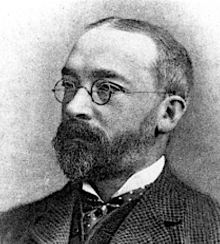
George Somers Leigh Clarke was born in Newington Surrey, England in 1822 and trained as an architect under Sir Charles Barry (1795-1860). He was active as an architect in London from the 1840s.
He exhibited frequently at the Royal Academy in London from 1842 to 1881.
He was elected an Associate of the Royal institute of British Architects (ARIBA) in 1845, and a Fellow of the Royal Institute of British Architects (FRIBA) in 1859.
His business address was given as Architect's office, New Houses of Parliament, London in 1842; 10 Claremont Place, London in 1843 and 1845; 52 Tavistock Street, london in 1849 and 1852; Buckingham Chambers, London in 1852; 2 Brunswick street, London in 1858 and 1860; and 20 Cockspur Street, London in 1861 and 1881. From 1874 he lived at Walpole, Manor Park, Chislehurst, Kent, a house he had built for himself and where he died on 4 July 1882
His nephew, Somers Clark (1841-1926), was also an architect.
A biographical file on George Somers Leigh Clarke is available on request from the Enquiry Desk, Royal Institute of British Architects Library, London.
Architectural works by Clarke included the restoration of St Peter's Church, Dunstable, Bedfordshire (1852); Cowley Manor, near Cheltenham, Gloucestershire (1854-62); the London Printing and Publishing Co. building, West Smithfield, London (1860); Brighton Blind Asylum, Eastern Road, Brighton, Sussex (1861); Merchant Seamen's Orphans Asylum, Wanstead, London (1861-63); Turkish Baths, 76 Jermyn Street, London (1862); offices for the General Credit and Discount Company, 7 Lothbury, London (1866); Swan Downer School, 11 Dyke Road, Brighton, Sussex (1867-69); Architectural Museum and Architectural Association building, 18 Tufton Street, London (1869); restoration of All Saint's Church, West Bromwich, Staffordshire (1872); St Martin's Church, Round Hill, Brighton, Sussex (1872-75); Wyfold Court, Oxfordshire with Ewan Christian (1872-76); Milton Hall, Gravesend, Kent (1873); Harley, Manor Park, Chislehurst, Kent (1874); Walpole, Manor Park, Chislehurst, Kent - built for himself by Clarke (1874); Pelham, Manor Park, Chislehurst, Kent (1874); Walsingham, Manor Park, Chislehurst, Kent (1874); Wyfold Court, Rotherfield Peppard, Oxfordshire (1874-84); Manor House, Broadway, Sidmouth, Devon (1876); Rectory, 2 St Paul's Cray Road, Chislehurst, Kent (1877); Selwood House, Kemnal Road, Chislehurst, Kent (1878); Selwood House, Kemnal Road, Chislehurst, Kent (1878); renovation work, St Michael's Church, Houghton Regis, Bedfordshire (1878); Grange House, St Paul's Cray Road, Chislehurst., Kent (1878); Crayfield, St Paul's Cray Road, Chislehurst, Kent (1878); Warren House, St Paul's Cray Road, Chislehurst, Kent (1878); Cleveland, St Paul's Cray Road, Chislehurst, Kent; Grange House, St Paul's Cray Road, Chislehurst, Kent; alterations to Church of St Nicholas, Islip, Oxfordshire (1879); Coffee Tavern, 43–45 High Street, Chislehurst, Kent (1881); and The Warren, Croydon Road, Hayes, Kent (1882).
Directory of British Architects 1834-1914. Compiled by Antonia Brodie, et al. Volume 1: A-K. London; New York: British Architectural Library, Royal Institute of British Architects/Continuum, 2001
Girouard, Mark. The Victorian Country House. New Haven and London: Yale University Press, revised and enlarged edition, 1979
‘Obituary’. The Builder vol. 43, 8 July 1882 p. 60
‘Obituary’. The Builder vol. 43, 15 July 1882 p. 94
‘Obituary’. The Builder vol. 43, 29 July 1882 p. 160